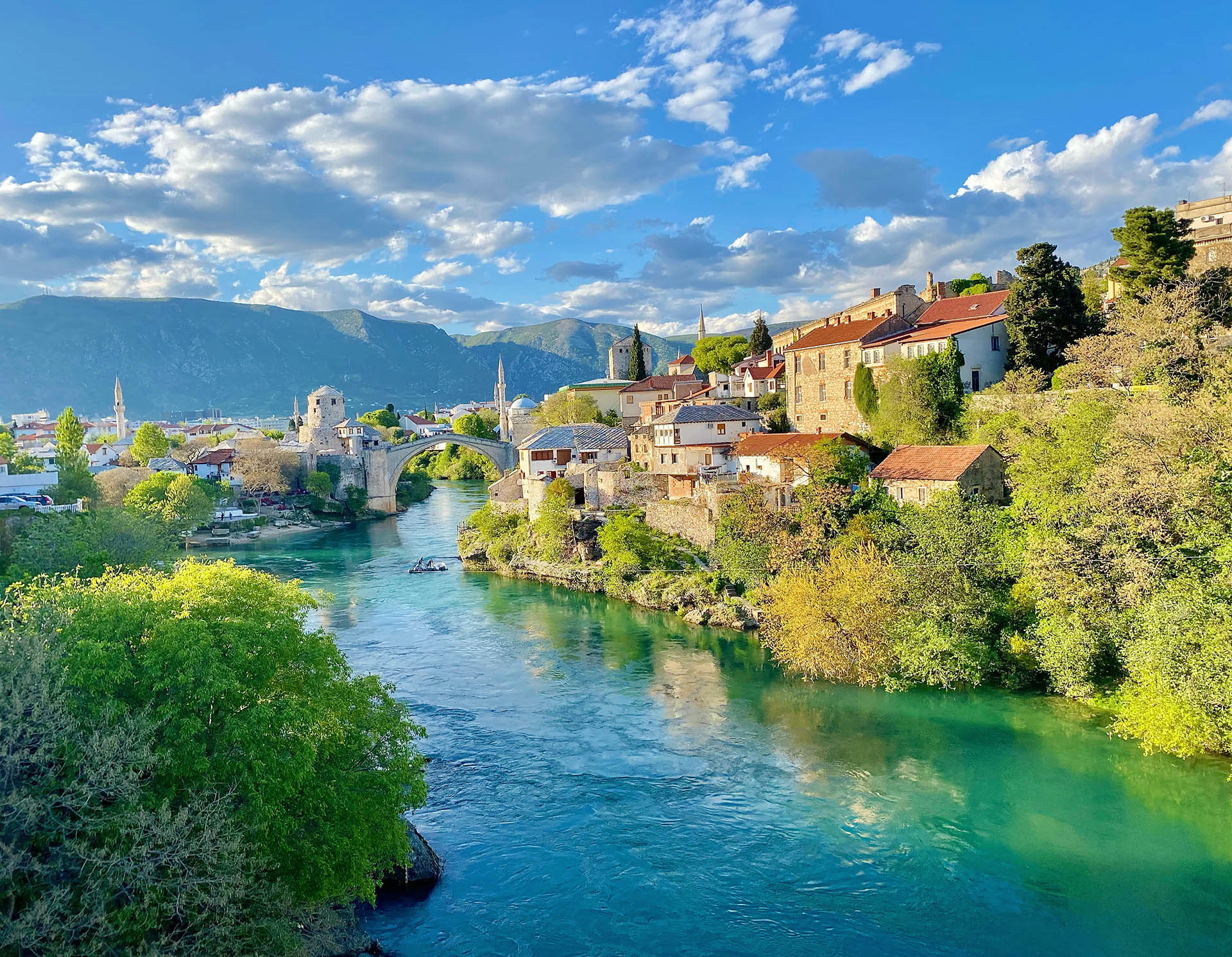Below is one of my favourite day trips from Mostar, consisting of three attractions all located south of the city off the main E73 road to Dubrovnik.
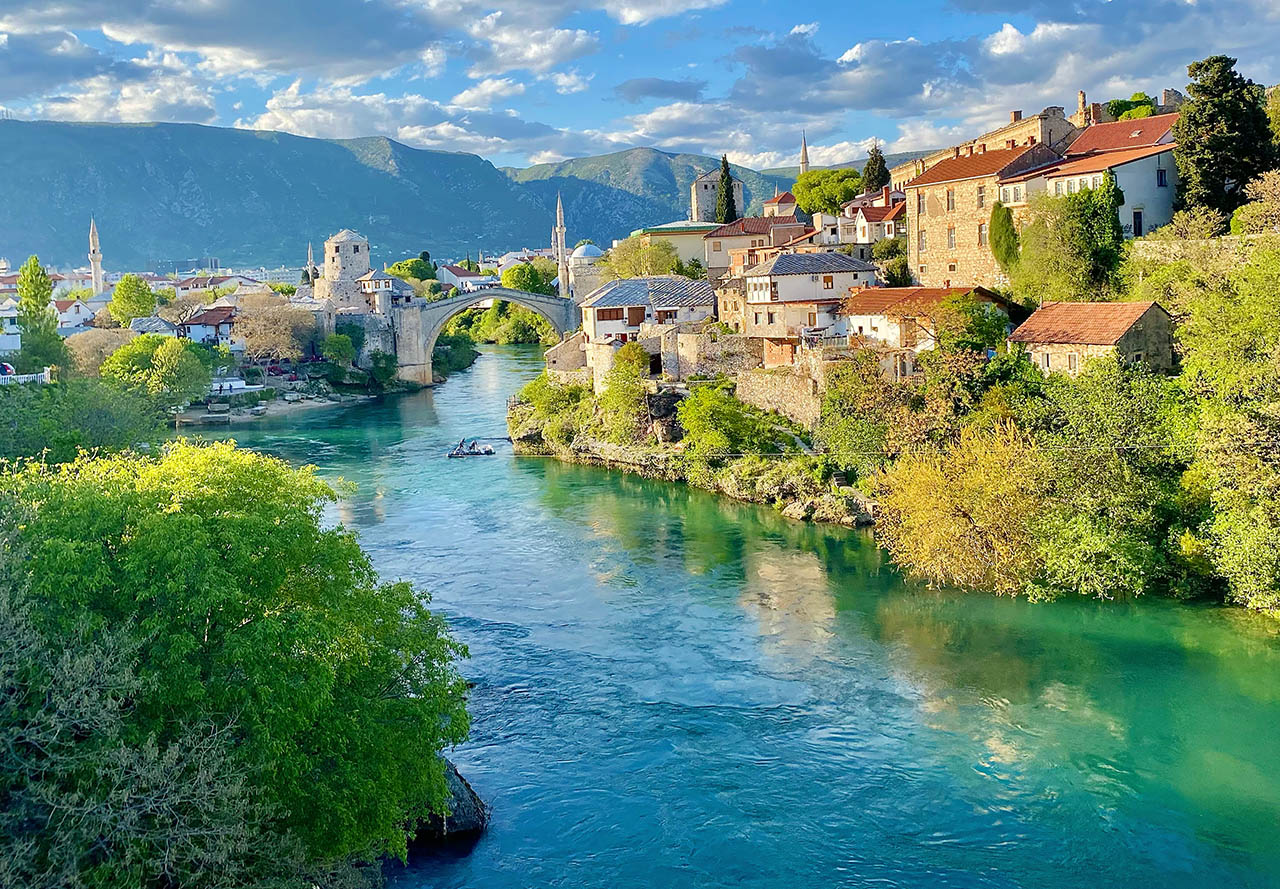

Below is one of my favourite day trips from Mostar, consisting of three attractions all located south of the city off the main E73 road to Dubrovnik.
Travel to my home-town of Mostar, Bosnia and Herzegovina is becoming more and more popular. Though many come to the city on a day trip from the nearby Croatian coast to see its world-famous Old Bridge, an increasing number of visitors are choosing to stay at least one night there to explore more of Bosnia & Herzegovina. You do not have to go far to discover stunning gems in this underrated Balkan country. Below is one of my favourite day trips from Mostar, consisting of three attractions all located south of the city off the main E73 road to Dubrovnik.
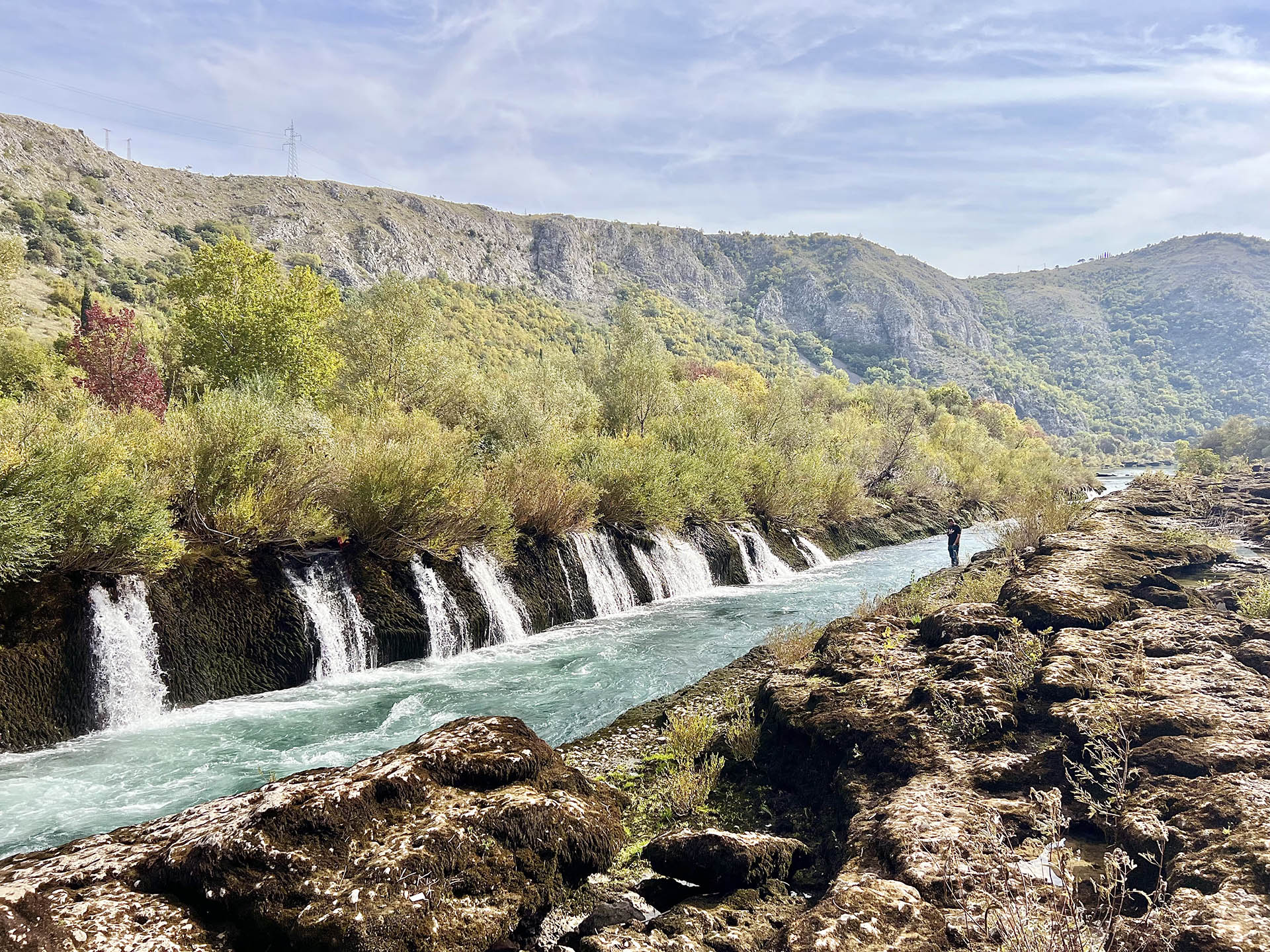
This natural phenomenon is located just outside Buna village, on the southern outskirts of Mostar. Here the river Buna has formed a perfectly straight riverbed into which cascade a series of waterfalls. The sight is so unusual that many find it hard to believe that it is not an artificial creation!
Start by soaking in the views from the bridge just after the turning from the E73 road. You can then walk down and along the riverbank. There are no restrictions on where you can walk, but bear in mind that the surface can be sharp and uneven right next to the water. Also, it is strongly recommended not to swim in the river. This is highly dangerous due to the strong currents and whirlpools, with kayaking not being any safer. There are lots of other locations to swim in apart from this amazing place if that is what you are looking for.
Once you have taken time to take in the views and take some photographs that will no doubt impress your friends and family back home, it’s time to go to the next stop.
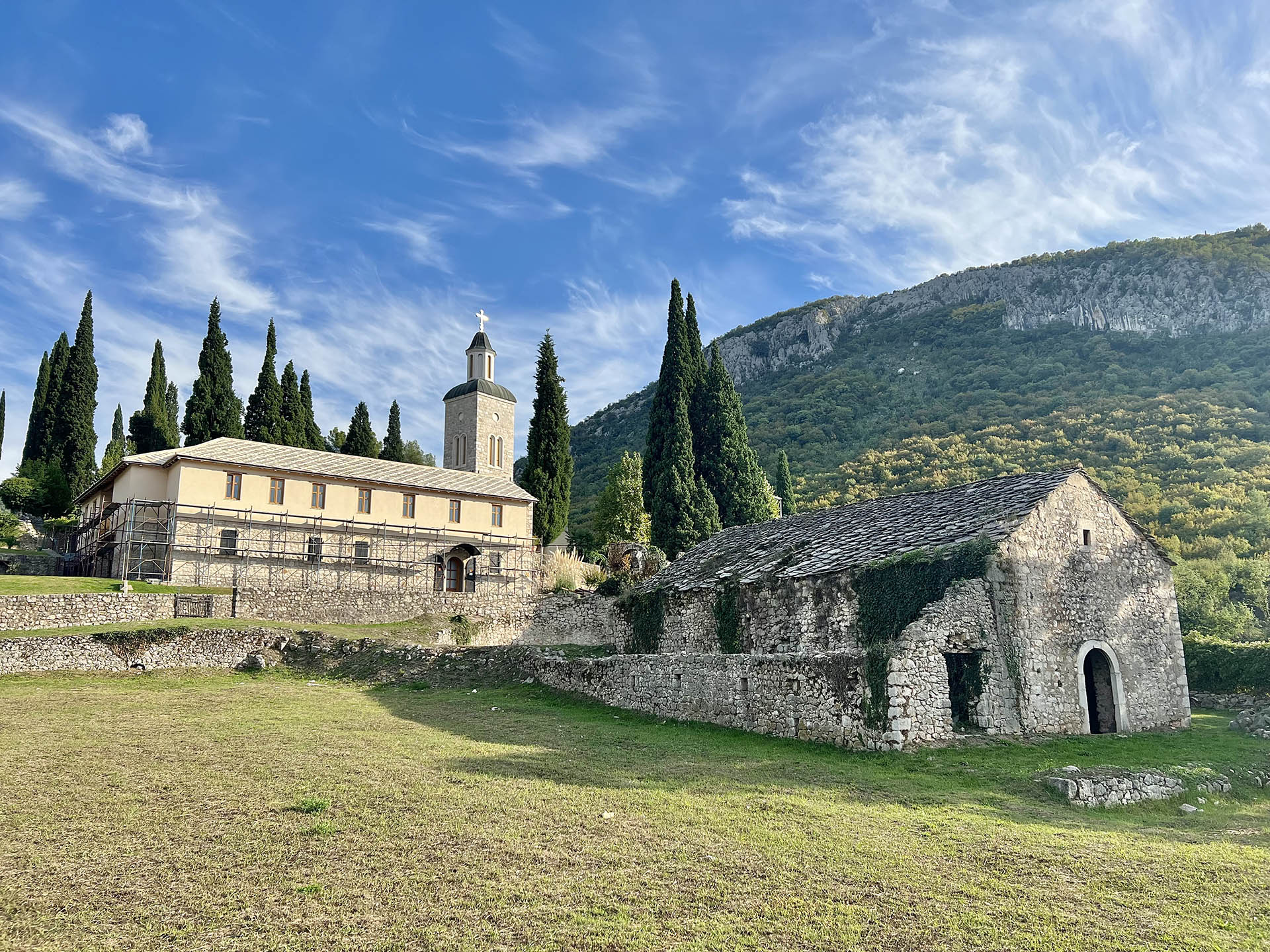
The monastery is located further down the road in a picturesque valley with the Neretva River running through it. The banks around Neretva canyon have always been known for their fertile soil. You will therefore notice much well-cultivated land, including vineyards with local grape varieties.
Located between two cliffs, there is evidence of there having been a church here since at least the 14th century. The Ottoman Turks demolished that church in 1468 during their conquest of the region. In 1566, the Miloradovic-Hrabren family-who were prominent local Orthodox Christians-gained permission from the qadi (judge) in nearby Nevesinje to rebuild it on its original foundations and create an adjacent monastery complex. Zitomislici, together with Zavala and Tvrdos, soon became known as one of the three most important Orthodox Christian monasteries in Herzegovina. This remains the case to the present day, though now only three monks reside there and it has lost some of the land it formerly owned.
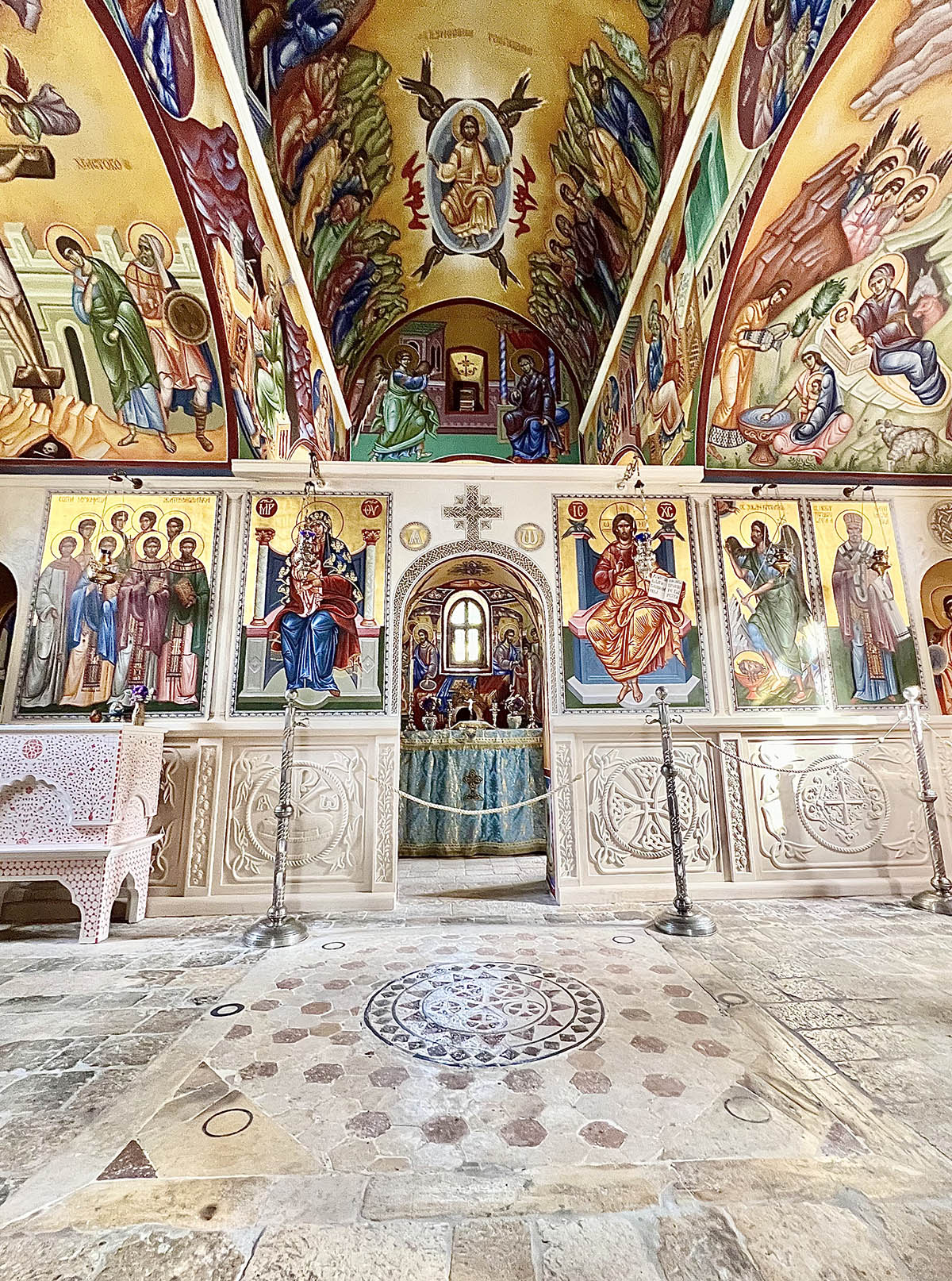
I recommend that you start your visit by going inside the monastery church. Entry is free of charge. You will immediately be struck by the extensive, colourful frescoes (wall paintings), and the smell of incense. In front of you is the elaborate iconostatis, a screen that divides the altar from the main body of the church. In typical Orthodox tradition, the priest alone goes to the altar behind the screen to chant prayers. The congregation-who can hear but not see him-for the most part remain standing. In Orthodox Christianity is not the custom for most people, except for the infirm, to sit during services.
Afterwards, you can walk around the complex as much as you wish to admire the views. The newly opened museum showcases the monastery’s history and some of its priceless treasures. This includes ancient books, some of which date back to the 14th century, and historic icons (devotional paintings of saints). Everything is captioned in English. Before leaving, you can check out the gift shop. Here you can buy wine, honey and other items that are made in-house by the monks largely from the monastery’s own produce. There are plans by the monks to eventually open a restaurant in the grounds as well. Watch this space!
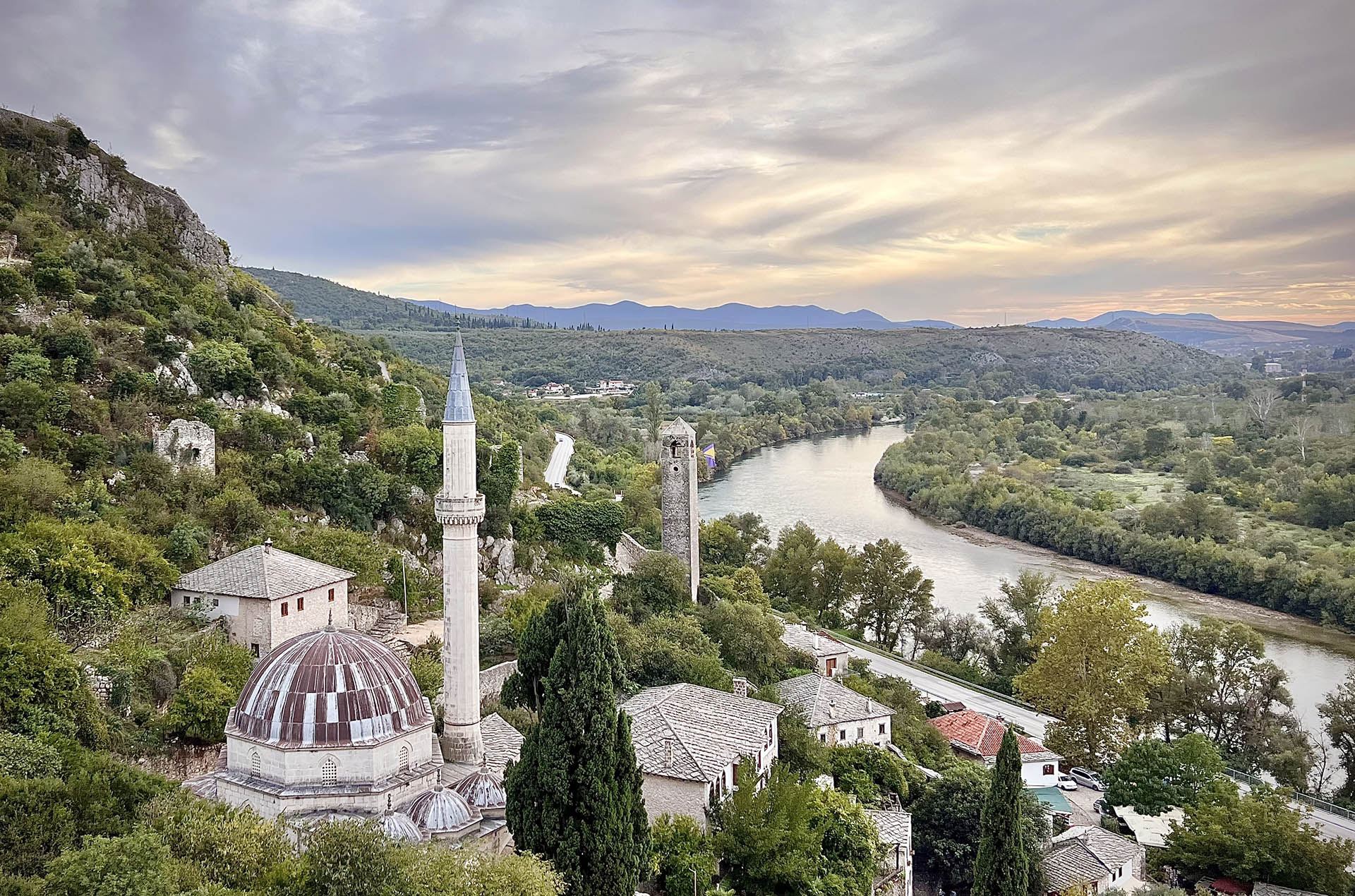
Pocitelj is a small town on the banks of the Neretva River that is first mentioned in written sources from 1444, by which time it already had extensive fortifications. In 1471, the Ottoman Turks conquered Pocitelj for the final time. Between then and their departure in 1878, they significantly built up the town and extended its medieval fortifications. Modern Pocitelj is a strikingly beautiful place, with many historic, Ottoman-style houses dating from the 16th to 19th centuries. Though it was heavily damaged during fighting in the 1992-5 war, it has since been extensively and sympathetically restored.
Pocitelj’s mosque is built in the 16th century, there is a charge for tourists to enter and see its intricate decorations. But it is also a great place to rest and take in the atmosphere of the town. Afterwards, you can continue walking right up to the top of the fortress. Along the way you’ll go past old houses and yards where you’ll see residents go about their daily lives. And if you get lost along the narrow, winding roads? That’s all part of the fun! But as Pocitelj is so small, it won’t take you long to find your way again.
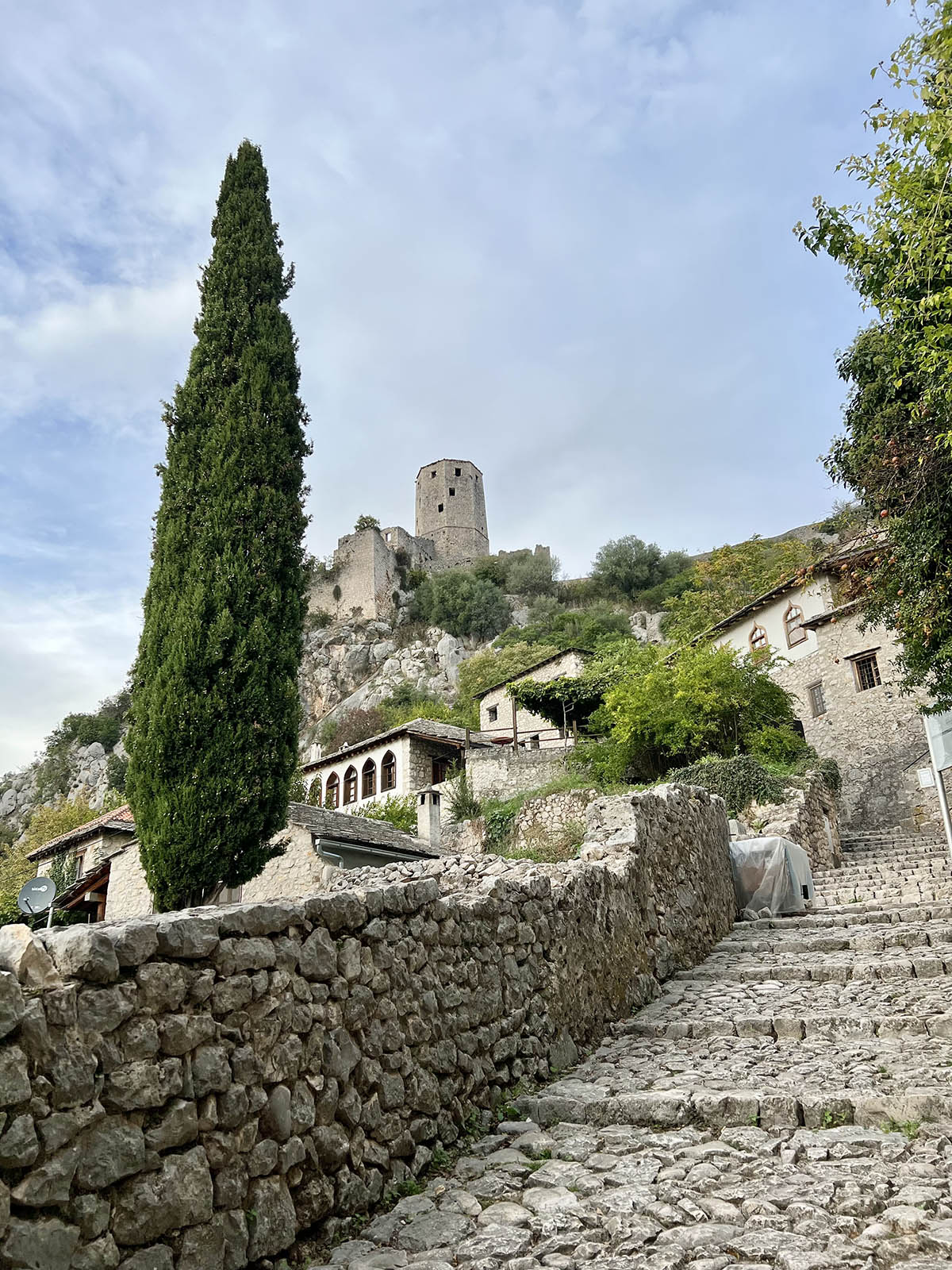
On a personal level, I have been fascinated with Pocitelj since I was a small child. My maternal grandparents had a painting of its distinctive, Ottoman-era fortified tower hanging on their living room wall. I used to be mesmerised by that painting. It turns out many overseas visitors feel the same, as tourist busses coming from Croatia increasingly make a stop at Pocitelj. And it is a stop well worth making.
Have you ever visited Mostar, Bosnia and Herzegovina? Did you ever go to some or all of the above three travel treasures? Comment below to tell us all about it.
